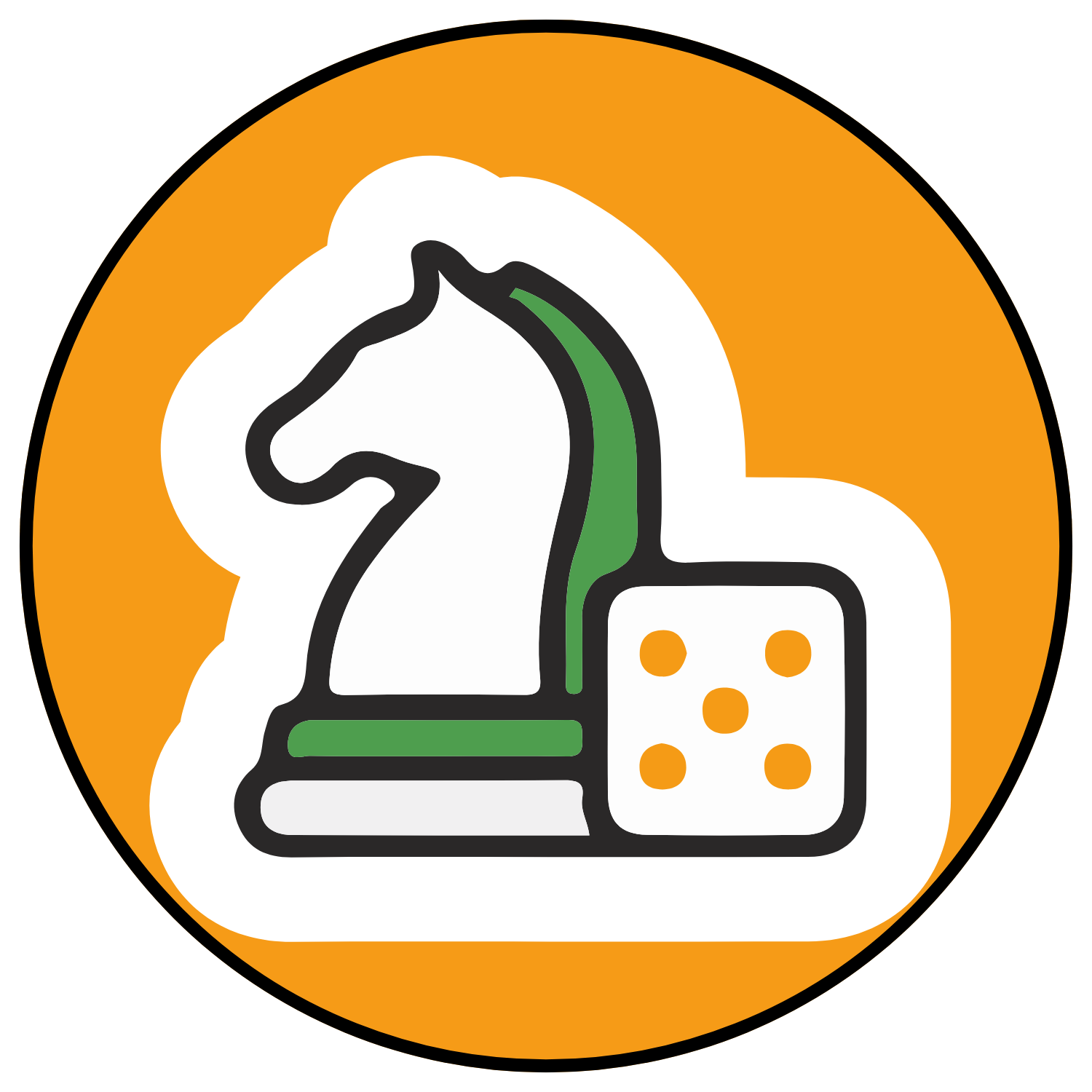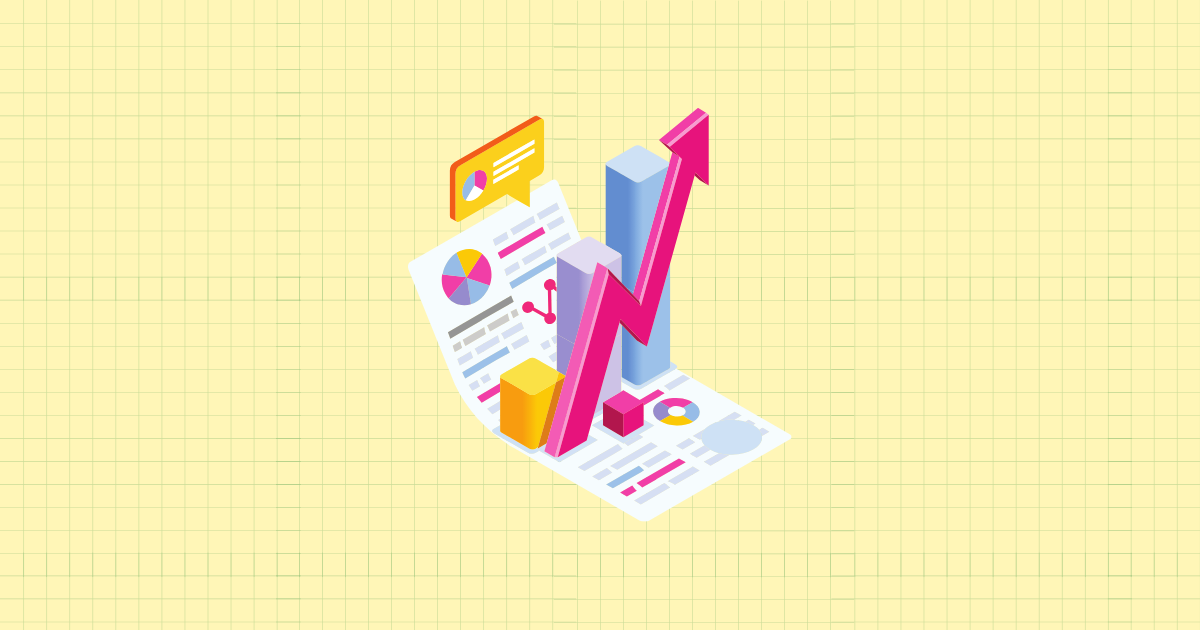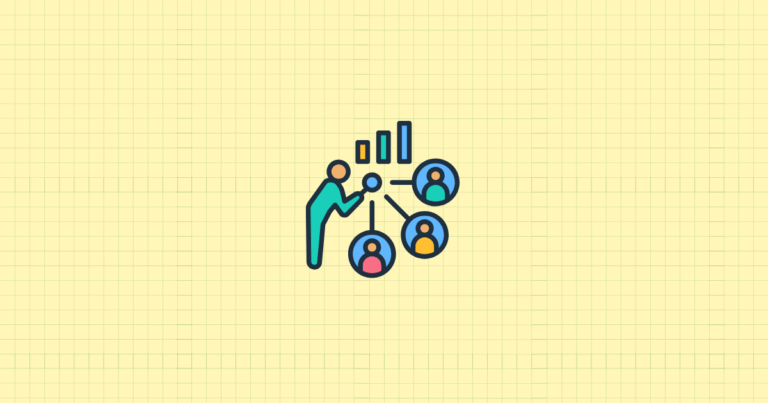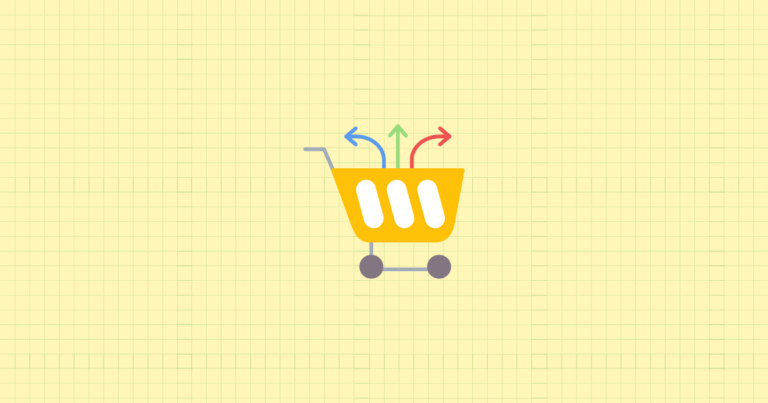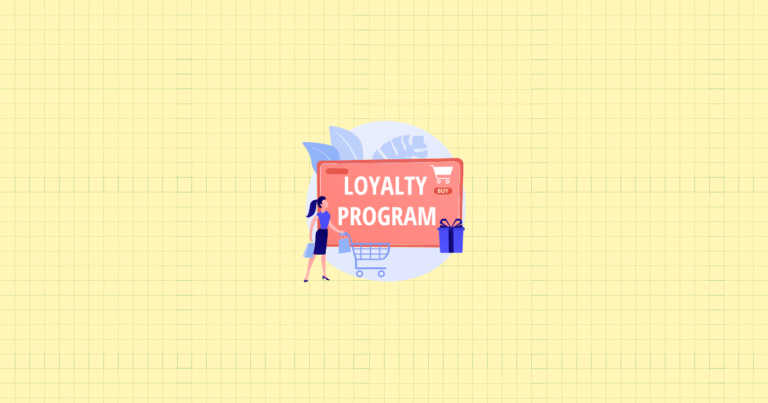Did you know that targeting the right customer with the right offer at the right time can increase conversion rates by up to 300%? It’s true, and it all starts with understanding who your customers are. The difference between a thriving Shopify store and one that’s merely surviving often comes down to how well you recognize and respond to different customer types.
Every visitor to your store tells a story. Some are first-time explorers, cautiously browsing your products and weighing their options. Others are loyal patrons who know exactly what they want from your brand. The strategies that convert one group often fall flat with the other. This disconnect costs Shopify merchants thousands in wasted marketing dollars every year.
In this guide, you’ll discover how to identify, separate, and effectively market to both first-time and returning customers. You’ll learn practical segmentation techniques, promotion strategies that work for each group, and how to implement them on your Shopify store. By the end, you’ll have a clear roadmap for creating targeted promotions that speak directly to your customers’ purchase history, dramatically improving your conversion rates and customer lifetime value.
The Value of Customer Segmentation for Shopify Stores
Customer segmentation isn’t just a fancy marketing term—it’s the backbone of every successful e-commerce strategy. At its core, segmentation means dividing your customer base into distinct groups with similar characteristics, behaviors, or needs. For Shopify merchants, this approach transforms generic marketing into precision-targeted campaigns that resonate on a personal level.
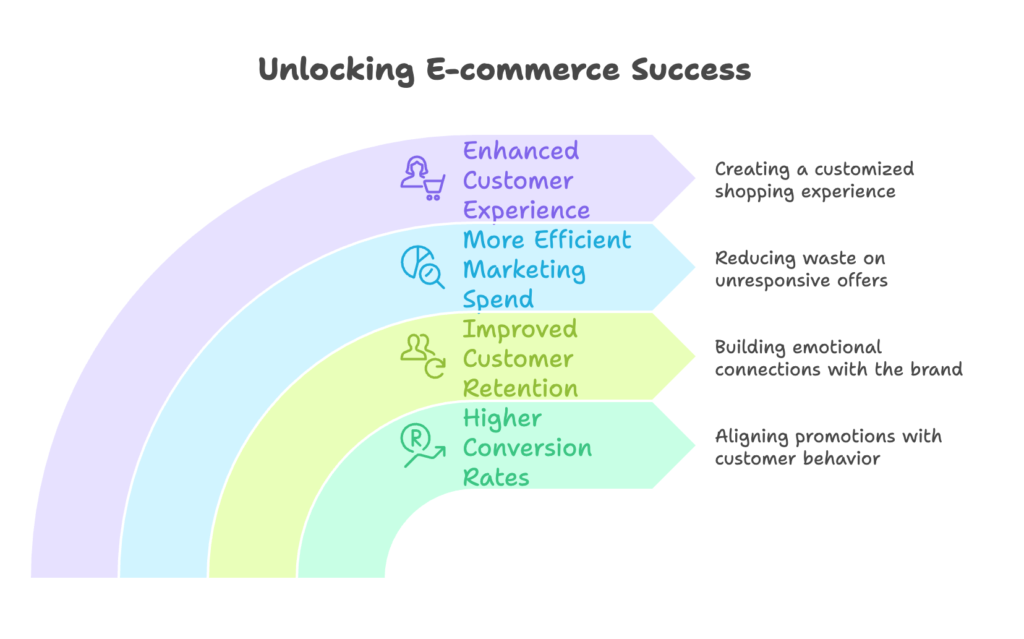
The numbers don’t lie. Segmented campaigns drive a 760% increase in revenue compared to one-size-fits-all approaches. Why? Because customers crave personalization. They want to feel understood, not just sold to.
When you implement effective segmentation in your Shopify store, you’ll immediately notice several benefits:
- Higher conversion rates – When promotions align with customer behavior, they’re simply more likely to buy
- Improved customer retention – Personalized experiences build emotional connections with your brand
- More efficient marketing spend – Stop wasting budget on customers who won’t respond to certain offers
- Enhanced customer experience – Relevant offers create a shopping experience that feels custom-built
Tools like Growth Suite make this process even more powerful by automatically analyzing visitor behavior and purchase patterns, enabling you to create truly personalized promotion strategies without the guesswork.
First-Time vs. Returning Customers: Key Differences
First-time and returning customers might shop at the same store, but psychologically, they’re worlds apart. Understanding these differences is crucial for crafting promotions that convert.
First-time customers are in discovery mode. They’re curious but cautious. They don’t know your brand yet, and they’re weighing the risk of purchasing from an unfamiliar store. Their primary concerns revolve around trust, product quality, and overall value proposition. A discount might entice them, but what they’re really looking for is reassurance that taking a chance on your store is worth it.
Returning customers, on the other hand, have already crossed that trust threshold. They know your products, understand your quality, and have experienced your customer service. Their concerns shift from “Can I trust this store?” to “What else do they have that I might like?” or “Is it worth coming back again?”
This fundamental difference impacts not just what you offer, but how you communicate it:
| Factor | First-Time Customers | Returning Customers |
|---|---|---|
| Cost to Business | 5-25x more expensive to acquire | More cost-effective to retain |
| Purchase Drivers | Trust indicators, risk reduction | Value reinforcement, exclusivity |
| Profit Potential | Lower initial order values | Spend 67% more on average |
| Ideal Incentives | First-purchase discounts, free shipping | Loyalty rewards, personalized offers |
When looking at the numbers, the value proposition becomes clear: returning customers typically spend 67% more than new customers and are 50% more likely to try new products. But you can’t build a business on returning customers alone—you need a steady flow of new customers who eventually become loyal shoppers.
That’s why creating distinct strategies for each group is essential. A promotion that works wonders for first-time customers might actually devalue your brand in the eyes of loyal shoppers who expect more personalized recognition.
Identifying Customer Types in Shopify
Before you can create targeted promotions, you need to identify who falls into each customer category. Fortunately, Shopify provides several ways to distinguish between first-time and returning customers.
The simplest approach starts with Shopify’s native analytics. Navigate to your Shopify admin dashboard and select “Analytics” from the main menu. Under “Reports,” you’ll find the “Returning customer rate” metric. This shows the percentage of orders placed by customers who have previously purchased from your store, giving you a quick overview of your customer retention.
But this high-level view only scratches the surface. To truly understand your customer segments, you’ll want to dig deeper:
- Customer lists in Shopify admin: Under “Customers,” you can view purchase counts for each individual, allowing you to create simple lists of one-time versus repeat buyers
- ShopifyQL: Shopify’s query language enables you to create more nuanced segments with commands like
RETURN DISTINCT Customer.email FROM sales WHERE Customer.orders_count = 1for first-time customers - Third-party analytics: Tools like Growth Suite provide deeper insights by tracking not just purchases but also browsing behavior, engagement patterns, and purchase intent signals
The key limitation of Shopify’s native tools is that they focus primarily on purchase history, missing the crucial browsing and engagement data that precedes a sale. This is where specialized tools make a significant difference, allowing you to identify high-intent browsers who haven’t purchased yet or recognize returning customers who might be at risk of churning.
When creating customer segments, remember that the goal isn’t just classification—it’s actionable insight. You want to identify patterns that reveal opportunities for targeted promotions that match each customer’s relationship with your brand.
Creating Effective Customer Segments in Shopify
Once you understand the importance of distinguishing between customer types, the next step is setting up practical segments in your Shopify store. Think of segmentation as creating special VIP lists—each with their own unique opportunities for personalized marketing.
But here’s where many store owners stumble. They create segments based on intuition rather than data, leading to missed opportunities and ineffective promotions. Let’s fix that by exploring how to build data-driven customer segments in Shopify.
Setting Up Basic Customer Segments
Shopify’s native segmentation tools have improved significantly in recent years, making it easier than ever to create basic customer groups without technical expertise.
To start creating customer segments in Shopify:
- Navigate to your Shopify admin dashboard
- Select “Customers” from the main menu
- Click on “Customer segments” in the submenu
- Click “Create segment” to open the segment builder
For first-time customer segments, you’ll want to focus on criteria like:
- Customers who have placed exactly one order
- Customers who placed their first order within a specific timeframe (e.g., last 30 days)
- Customers who haven’t placed a second order within 30 days of their first purchase
The first segment helps you identify all one-time purchasers, while the second focuses on recent first-time customers, and the third highlights at-risk first-time buyers who haven’t converted to repeat customers.
For returning customer segments, consider these criteria:
- Customers who have placed two or more orders
- Customers with a total spend above a certain threshold (e.g., $200)
- Customers who have purchased within the last 90 days and have purchased at least twice
These segments help you identify loyal customers, high-value customers, and recently active repeat customers respectively—each representing different opportunities for targeted promotions.
Using ShopifyQL, you can create even more precise segments with commands like:
RETURN DISTINCT Customer.email, Customer.orders_count, Customer.total_spent FROM sales WHERE Customer.orders_count >= 2 AND Customer.total_spent > 200 ORDER BY Customer.total_spent DESC
This query would identify your high-value returning customers, perfect for VIP promotions or exclusive offers.
Advanced Segmentation Strategies
Basic segmentation is a great start, but advanced segmentation strategies can take your promotional targeting to another level. Here’s where you move beyond simple purchase counts to understand the quality of customer relationships.
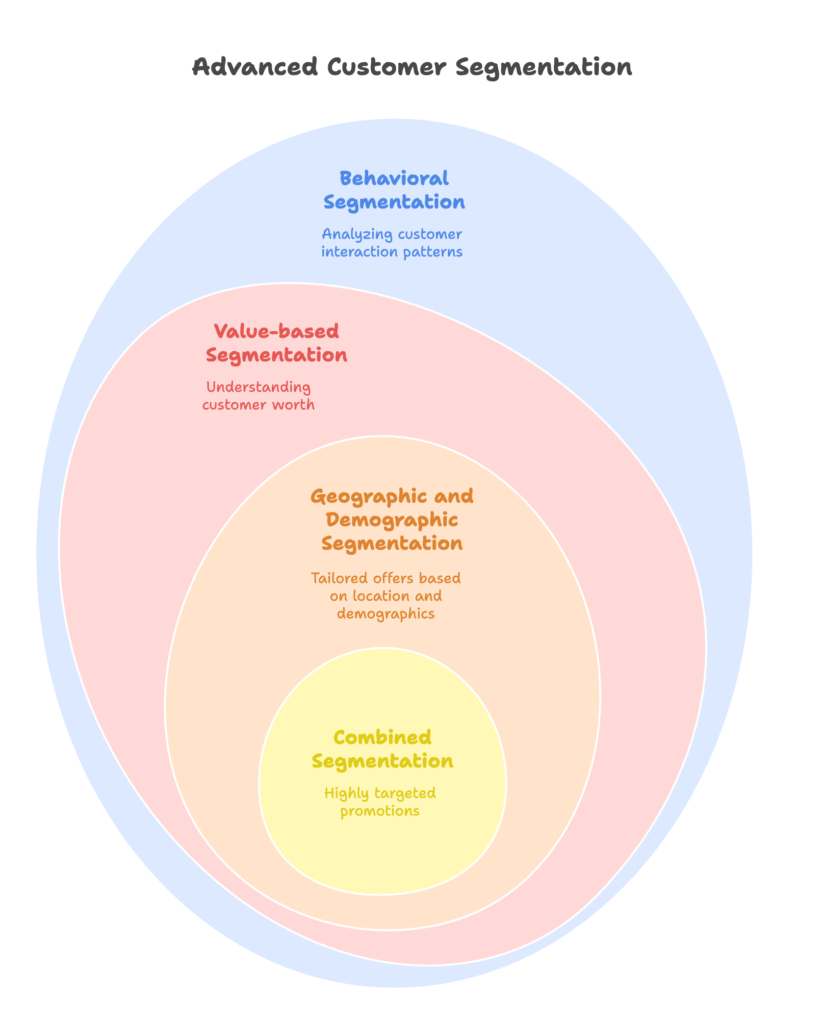
Behavioral segmentation looks at how customers interact with your store. With tools like Growth Suite’s data analysis engine, you can segment customers based on:
- Purchase frequency patterns: Identify customers who buy monthly versus seasonally
- Category preferences: Group customers who consistently purchase from specific product categories
- Browse-to-buy ratio: Distinguish between customers who purchase immediately versus those who research extensively
Value-based segmentation goes beyond simple spending totals to understand customer worth. Consider segments like:
- High CLV customers: Those projected to spend significantly over their lifetime
- High AOV customers: Those who make fewer but larger purchases
- Discount-sensitive customers: Those who only purchase when promotions are active
Geographic and demographic segmentation adds another layer of targeting power:
- Location-based segments: Target customers in specific regions for seasonal or regional promotions
- Age and gender segments: Create promotions for products with strong demographic appeal
- Urban/suburban/rural segments: Tailor offers based on lifestyle differences
The most powerful approach is combining these segment types. For example, you might create a segment of “high-value returning customers from urban areas who primarily purchase accessories” for a highly targeted promotion on your premium accessory line.
Automating Segment Updates
The true power of segmentation emerges when your segments update dynamically as customer behavior changes. Static segments quickly become outdated as customers make more purchases or change their shopping patterns.
In Shopify, segments created using the segment builder or ShopifyQL automatically update as customer data changes. This means a customer who makes their second purchase will automatically move from your “first-time customers” segment to your “returning customers” segment without manual intervention.
To maximize the value of these dynamic segments, integrate them with your marketing tools:
- Email marketing: Sync segments with platforms like Klaviyo or Mailchimp to trigger segment-specific email campaigns
- SMS marketing: Use segments to send tailored text messages through services like SMSBump
- On-site personalization: Display different banners, pop-ups, or product recommendations based on customer segment
Tools like Growth Suite take automation a step further by using AI to analyze customer behavior patterns and recommend optimal promotion strategies for each segment. This reduces the guesswork in deciding what offers will resonate with different customer groups.
The key to successful segment automation is regular monitoring. Set a calendar reminder to review your segment performance monthly. Are your segments growing as expected? Are customers moving between segments in healthy patterns? Use these insights to refine your segmentation strategy over time.
Crafting Promotions for First-Time Customers
Converting first-time visitors into customers requires a delicate balance. Offer too little, and they might not take the leap of faith. Offer too much, and you sacrifice margins unnecessarily or attract discount-hunters rather than loyal customers.
The secret lies in understanding that first-time customer promotions aren’t just about discounts—they’re about building trust and demonstrating value. Let’s explore how to create first-time customer promotions that not only convert but also set the stage for lasting relationships.
Welcome Strategies to Convert First Purchases
The first impression matters enormously. Your welcome offer is often the initial interaction potential customers have with your brand, so it needs to make an impact while aligning with your overall brand positioning.
When designing welcome offers, consider these three proven approaches:
- Percentage-based discounts: Classic offers like “15% off your first purchase” perform well for most product categories. They’re simple to understand and can be adjusted based on your margins.
- Free shipping thresholds: “Free shipping on your first order over $50” encourages higher initial order values while removing a common purchasing barrier.
- Gift with purchase: Including a free product sample or small gift can create perceived value without directly discounting your products.
The right approach depends on your product type, price point, and brand positioning. Luxury brands might prefer subtle gifts over explicit discounts, while competitively-priced products might benefit from straightforward percentage discounts.
Implementing these offers in Shopify is straightforward:
- Create a specific discount code (e.g., “WELCOME15”) in your Shopify admin under Discounts
- Set usage limits to one per customer to prevent abuse
- Add the code to welcome emails sent to new subscribers
- Create targeted pop-ups for first-time visitors using apps like Growth Suite
Growth Suite can automate this entire process by detecting new visitors, displaying personalized welcome offers at the optimal moment, and even creating unique, time-limited discount codes for each visitor to create urgency.
Optimizing the First Purchase Experience
Even the most compelling welcome offer can fail if the purchasing process creates friction. First-time customers are already taking a risk by trying your store—any additional hurdles might cause them to abandon their cart.
Focus on streamlining these critical elements:
- Checkout simplification: Enable Shop Pay for one-click purchasing, and offer guest checkout with optional account creation after purchase
- Trust signals: Prominently display security badges, return policy highlights, and customer reviews throughout the purchase journey
- Mobile optimization: Ensure your checkout process works flawlessly on mobile devices, where most first-time browsers shop
- Clear shipping expectations: Display estimated delivery dates early in the process to reduce uncertainty
Building trust during this crucial first interaction creates a foundation for future purchases. Consider these trust-building elements:
- Social proof: Show product reviews, customer photos, and testimonials that address common concerns
- Guarantees: Offer satisfaction guarantees or easy returns to reduce perceived risk
- Live support: Make it easy to get questions answered with chat support or prominent contact information
Remember that the goal isn’t just to complete the first sale—it’s to create such a positive experience that the customer is immediately open to purchasing again.
Post-Purchase Engagement for First-Time Buyers
The moment after a first purchase is a golden opportunity. Your new customer has just taken a leap of faith, and how you respond will significantly impact whether they return.

Start with a thoughtful thank you sequence:
- Immediate order confirmation: Send a personalized thank you email that goes beyond transaction details to welcome them to your community
- Shipping updates: Keep them informed at each stage of delivery to build anticipation
- Product education: Share tips, tutorials, or care instructions to help them get maximum value from their purchase
This initial sequence should focus on supporting their current purchase rather than immediately pushing for the next sale.
Once the product has been delivered and they’ve had time to experience it, transition to second purchase incentives:
- Complementary product recommendations: “Complete your look with these matching items”
- Limited-time follow-up offers: “As a new customer, enjoy 10% off your second order this week”
- Feedback requests: Ask for their experience and offer a discount on their next purchase as thanks
Timing is crucial here. Studies show that the ideal window for encouraging a second purchase is typically 30-45 days after the first order for most product categories. Growth Suite’s analytics can help you identify the optimal timing for your specific products by analyzing customer purchase patterns.
The key is creating a seamless journey from first-time purchaser to returning customer by demonstrating that you value their business and are committed to their satisfaction beyond the initial sale.
Developing Returning Customer Promotion Strategies
Returning customers are the lifeblood of sustainable e-commerce. They cost less to convert, spend more per order, and become advocates for your brand. Yet many Shopify stores focus almost exclusively on acquiring new customers, missing the tremendous revenue potential of nurturing existing relationships.
The approach to returning customers differs fundamentally from first-time promotions. These customers already trust your brand and have experienced your products. Now, your goal is to deepen that relationship and increase their lifetime value through strategic, personalized promotions.
Loyalty-Building Promotions
Effective loyalty promotions make customers feel valued and incentivize continued engagement with your brand. The key is creating a system that rewards increased spending and engagement without eroding your margins.
Tiered reward systems work particularly well for returning customers because they create clear progression paths that encourage higher spending:
- Bronze tier: After 2-3 purchases, offer perks like free shipping on all orders
- Silver tier: After 5+ purchases or $X total spend, add benefits like early access to new products
- Gold tier: For your best customers, provide VIP-level benefits like dedicated support or exclusive products
Each tier should offer meaningfully better benefits than the previous one, creating clear incentives to advance. Growth Suite can help implement these tiers by automatically tracking customer spending and purchase frequency, then triggering appropriate reward notifications.
Personalized offers based on purchase history significantly outperform generic promotions for returning customers:
- Complementary product recommendations: “Based on your recent purchase of X, you might love our Y”
- Replenishment reminders: “Time to restock your favorite product? Enjoy 10% off when you repurchase”
- Bundle offers: “Complete your collection with this bundle including items that complement your previous purchases”
Growth Suite’s AI-driven campaign engine excels at creating these personalized offers by analyzing customer purchase patterns and recommending highly relevant products and promotion types tailored to individual preferences.
Re-engagement Campaigns for Dormant Customers
Even the most loyal customers sometimes drift away. A strategic re-engagement campaign can bring these valuable customers back into the fold before they’re lost completely.
The first step is identifying at-risk customers before they fully disengage. Look for these warning signs:
- No purchases in the past 2-3 months (for products typically bought monthly)
- Decreasing engagement with emails (lower open rates, no clicks)
- Browsing without purchasing after a history of converting easily
For these at-risk customers, implement a gradual re-engagement strategy:
- Light touch reminder: “We miss you! Here’s what’s new since you’ve been gone”
- Feedback request: “Is there something we could improve? We value your opinion”
- Incentive offer: “Here’s 15% off your next order to welcome you back”
For customers who have been inactive for longer periods (6+ months), consider an escalating offer strategy where the incentive increases with duration of inactivity, but only to a point that remains profitable.
Growth Suite’s automated campaign capabilities allow you to set these re-engagement sequences to trigger automatically when customers meet inactivity thresholds, ensuring you don’t miss opportunities to revive valuable customer relationships.
VIP Programs for High-Value Returning Customers
Your highest-value customers deserve special treatment. These customers often represent a disproportionate percentage of your revenue—typically 20% of customers generate 80% of profits. A dedicated VIP program acknowledges their importance and incentivizes continued loyalty.
Effective VIP benefits include:
- Permanent perks: Free shipping, extended return periods, or dedicated customer service
- Exclusive access: Early access to new products, limited editions, or exclusive colorways
- Recognition: Personal thank you notes, birthday gifts, or anniversary acknowledgments
- Community: Invitation to private events, focus groups, or ambassador programs
The key is offering benefits that feel exclusive and valuable without necessarily relying on discounts that erode margins. Exclusivity and recognition often matter more to VIP customers than monetary savings.
Implementing a VIP program in Shopify can be as simple as adding a customer tag for VIP status, then creating automated benefits:
- Use Shopify’s customer tags to mark high-value customers as “VIP”
- Create automatic discount rules that apply only to customers with the VIP tag
- Set up VIP-specific email flows in your email marketing platform
- Create exclusive collections only visible to logged-in VIP customers
For more sophisticated VIP programs, apps like Growth Suite can dynamically manage VIP status based on spending thresholds, purchase frequency, and other behaviors, automatically upgrading or downgrading customers as their purchasing patterns change.
Technical Implementation in Shopify
Even the most brilliant promotion strategy falls flat without proper technical implementation. Let’s translate your segmentation and promotion concepts into practical Shopify workflows and systems that operate efficiently at scale.
Setting Up Promotion Automation
Manual promotion management quickly becomes overwhelming as your store grows. Automation ensures that the right customers receive the right offers at the right time, without constant oversight.
Email marketing workflows form the backbone of most promotion automation:
- Segment synchronization: Connect your Shopify customer segments with your email marketing platform (Klaviyo, Mailchimp, etc.)
- Triggered workflows: Create automated email sequences that trigger based on customer actions or segment membership
- A/B testing: Test different promotional offers with smaller segments before rolling out to all customers
Common automated email sequences include:
- Welcome series for new customers with escalating offers if they don’t purchase
- Post-purchase series with complementary product recommendations
- Re-engagement series for customers who haven’t purchased in X days
- VIP-exclusive announcements and early access opportunities
Discount code management requires equal attention to avoid promotion abuse:
- Usage limits: Set appropriate usage restrictions (one-time use, expiration dates)
- Unique codes: Generate unique codes for better tracking and to prevent sharing
- Performance tracking: Monitor redemption rates and resulting revenue to optimize future promotions
Growth Suite excels in this area by creating personalized, time-limited discount codes automatically for each customer based on their segment and behavior. The system handles code generation, application, and expiration without manual intervention, significantly reducing the administrative burden.
Leveraging Shopify Apps for Enhanced Segmentation
While Shopify’s native segmentation tools provide a solid foundation, third-party apps can dramatically enhance your capabilities:
Customer Analysis Apps provide deeper insights into your customer base:
- Cohort analysis: See how different customer groups perform over time
- Predictive analytics: Identify customers likely to purchase again or at risk of churning
- Purchase pattern recognition: Uncover trends that inform promotion timing
Promotion and Loyalty Apps expand your promotional toolkit:
- Points systems: Award points for purchases, referrals, and engagement
- Tiered loyalty programs: Manage status levels and associated benefits
- Referral management: Track and reward customer referrals
Growth Suite combines these capabilities in a unified platform, using AI to analyze customer behavior and automatically recommend the most effective promotions for different segments. Its comprehensive approach tracks visitor sessions, product engagement, and checkout behavior to create a detailed understanding of each customer’s journey.
When evaluating apps for your tech stack, prioritize those that:
- Integrate seamlessly with your existing tools
- Provide actionable insights rather than just data
- Scale efficiently as your customer base grows
- Offer automation to reduce manual work
Remember that the goal isn’t collecting data for its own sake—it’s gaining actionable insights that inform more effective promotional strategies.
Tracking and Measuring Promotion Performance
Without proper tracking, you’re flying blind. Effective measurement helps you understand which promotional strategies work best for each customer segment, allowing you to refine your approach over time.
Key performance indicators to monitor include:
- Segment-specific conversion rates: How do different segments respond to the same promotion?
- Average order value impact: Are promotions increasing overall cart value?
- Repeat purchase rate changes: Are first-time customer promotions leading to second purchases?
- Promotion ROI: Revenue generated versus discount cost and implementation expenses
- Customer lifetime value impact: Are promotions building long-term value or just driving one-time sales?
In Shopify, access these insights through:
- Shopify Analytics: The Reports section provides basic performance data on discounts and promotions
- Marketing section: Review campaign performance for ads and emails
- Customer reports: Analyze returning customer rate and customer cohort analysis
For more sophisticated analysis, Growth Suite provides comprehensive reporting on campaign performance, including detailed breakdowns by customer segment, time period, and promotion type. Its AI-driven insights highlight opportunities for optimization and suggest adjustments to improve performance.
Establish a regular review cadence (weekly for active promotions, monthly for overall strategy) to analyze performance data and make adjustments. Look beyond simple revenue metrics to understand the full impact on customer behavior and lifetime value.
Case Studies and Best Practices
Theory is valuable, but nothing beats seeing successful strategies in action. Let’s explore real-world examples of Shopify stores that have mastered the art of segment-specific promotions, along with lessons you can apply to your own store.
Successful First-Time Customer Campaigns
The most effective first-time customer campaigns balance acquisition costs with customer quality, attracting shoppers who will become loyal patrons rather than one-time discount hunters.
Case Study: Fashion Boutique Welcome Offer Optimization
A women’s clothing boutique tested three different welcome offers to determine which produced the best long-term customers:
- Offer A: 15% discount on first purchase (no minimum)
- Offer B: Free shipping on orders over $75
- Offer C: Free gift with purchase over $100
Initial results showed Offer A generating the highest conversion rate at 4.2%, compared to 3.1% for Offer B and 2.8% for Offer C. However, when tracking long-term metrics over 90 days, the story changed dramatically:
- Offer A customers: 22% made a second purchase, average 90-day value of $127
- Offer B customers: 35% made a second purchase, average 90-day value of $213
- Offer C customers: 41% made a second purchase, average 90-day value of $267
The free gift offer, while producing fewer initial conversions, attracted higher-quality customers with greater long-term value. The store adjusted its strategy to use Offer C as its primary welcome promotion, significantly increasing customer lifetime value despite the slightly lower initial conversion rate.
Key Takeaways:
- Track beyond the initial conversion to understand true promotion effectiveness
- Higher initial conversions don’t always translate to better long-term customers
- Test different offer types to find what attracts your ideal customer profile
- Consider using different welcome offers for different traffic sources or product categories
Effective Returning Customer Strategies
Successful returning customer strategies focus on increasing purchase frequency and average order value while strengthening emotional connections to your brand.
Case Study: Home Goods Store Tiered Loyalty Program
A home décor and furnishings store implemented a three-tiered loyalty program using Growth Suite to manage customer segmentation and automations:
- Insider (all returning customers): Free shipping on orders over $50
- Collector ($500+ lifetime spend): Free shipping on all orders, early access to sales
- Curator ($1,500+ lifetime spend): All previous benefits plus personal shopping assistance and exclusive limited editions
The results after six months showed:
- 54% increase in repeat purchase rate
- 27% increase in average order value from returning customers
- 67% of “Insider” tier customers actively working toward “Collector” status
- 92% retention rate for customers reaching “Curator” status
The program’s success stemmed from clear communication of tier benefits, visible progress tracking, and genuine value at each tier. Particularly effective was the personal shopping assistance offered to top-tier customers, which created an emotional connection beyond transactional benefits.
Key Takeaways:
- Create meaningful differentiation between loyalty tiers to drive advancement
- Combine transactional benefits (discounts, free shipping) with emotional benefits (exclusivity, recognition)
- Make progress visible so customers know how close they are to the next tier
- Personalize communications based on customer tier and purchase history
Common Pitfalls and How to Avoid Them
Even well-intentioned promotion strategies can backfire if they fall into common traps. Here’s how to avoid the most frequent mistakes:
Discount Dependency
The Pitfall: Training customers to only purchase when discounts are offered, eroding margins and brand value.
The Solution: Use discounts strategically rather than constantly. Alternate between discount promotions and value-added offers like free gifts, exclusive access, or enhanced services. Growth Suite helps prevent discount dependency by recommending varied promotion types based on customer segments and behavior patterns.
Over-Communication
The Pitfall: Bombarding customers with frequent promotional messages, leading to fatigue and unsubscribes.
The Solution: Implement frequency caps in your marketing automations to ensure no customer receives more than 2-3 promotional messages weekly. Use engagement data to adjust frequency for different segments—more engaged customers may welcome more communication.
Insufficient Segmentation Granularity
The Pitfall: Using overly broad segments that fail to acknowledge meaningful differences between customer groups.
The Solution: Regularly refine segments based on performance data. Start with basic first-time vs. returning customer segments, then progressively add layers like purchase frequency, category preferences, and average order value. Growth Suite’s AI-driven segmentation can identify natural customer groupings that might not be immediately obvious.
Technical Implementation Challenges
The Pitfall: Promotion rules that are difficult to implement or track in Shopify, leading to customer confusion or technical failures.
The Solution: Start with simpler promotion structures that Shopify can handle natively, then gradually introduce more complexity as you gain confidence. Test all promotional flows thoroughly before launch, including edge cases. Consider using specialized apps like Growth Suite that are designed to handle complex promotion logic reliably.
Future Trends in Customer Segmentation and Promotions
The landscape of e-commerce promotions continues to evolve rapidly. Staying ahead of these trends will give your Shopify store a competitive advantage as customer expectations and technologies change.
Emerging Technologies
AI and machine learning are transforming how stores understand and engage with different customer segments. These technologies enable:
- Predictive promotions: Offering discounts to customers who the AI predicts are at risk of churning, before they actually disengage
- Dynamic pricing: Adjusting promotion values based on customer lifetime value potential, inventory levels, and competitive positioning
- Behavioral triggers: Identifying micro-behaviors that indicate purchase intent or churn risk
Growth Suite is at the forefront of these AI applications, using advanced algorithms to analyze customer behavior patterns and recommend optimal promotion timing and content. The system continuously learns from results, improving its recommendations over time.
Advanced data integration is breaking down silos to create unified customer views:
- Omnichannel data unification: Connecting online behavior with in-store purchases for brands with physical locations
- Enhanced privacy-compliant tracking: New approaches to customer identification that respect privacy regulations like GDPR and CCPA
- Cross-platform integration: Connecting data from marketplaces, social selling, and direct website sales
These technologies enable significantly more precise customer segmentation and personalized promotions, moving beyond basic first-time vs. returning customer distinctions to nuanced understanding of individual shopper preferences and behaviors.
Evolving Customer Expectations
Customer expectations around promotions are shifting dramatically, with several clear trends emerging:
Hyper-Personalization Demands
Customers increasingly expect promotions tailored specifically to their preferences and needs:
- Recommendations based not just on purchase history but on browsing behavior, wish lists, and even time spent viewing specific products
- Context-aware offers that consider factors like location, weather, time of day, and recent life events
- Personalized content surrounding promotions, not just personalized discount values
The bar for what constitutes “personalized” continues to rise, with basic “[First Name]” email personalization no longer sufficient to impress customers accustomed to sophisticated recommendation engines on major platforms.
Privacy Considerations
Simultaneously, customers are increasingly concerned about how their data is used:
- Greater emphasis on transparently communicating what data is collected and how it’s used
- Shift toward first-party data strategies as third-party cookies become obsolete
- Value exchange where customers willingly share information in return for meaningful benefits
Successful Shopify stores will need to navigate this apparent contradiction—delivering highly personalized experiences while respecting privacy concerns. The solution lies in transparent value exchange, where customers understand exactly what they’re getting in return for sharing their data.
As these trends accelerate, the distinction between promotion strategies for first-time and returning customers will become both more important and more nuanced. The basic principles will remain, but the implementation will evolve to incorporate richer data, more sophisticated segmentation, and increasingly personalized offers.
References
- By the Numbers. (2024, November 15). How to See First-time and Returning Customers on Shopify. https://www.bythenumbersapp.com/first-time-vs-returning-customers/
- Shopify. (2025, March 1). What is Order History? How to View and Keep Track of Purchases. https://www.shopify.com/retail/order-history-why-keeping-track-of-customers-previous-orders-can-help-you-make-more-sales
- Putler. (2025, March 27). Shopify Customer Segmentation: The Complete Guide (2025). https://www.putler.com/shopify-customer-segmentation/
- Shopify. (2022, March 21). Get To Know and Engage With Your Audience With Customer Segmentation. https://www.shopify.com/blog/customer-segmentation
- Shopify. (2023). Shopify Customer Segmentation Documentation. https://help.shopify.com/en/manual/customers/customer-segmentation
- Klaviyo. (2024). The Ultimate Guide to Ecommerce Segmentation. https://www.klaviyo.com/resources/guides/segmentation-guide
- McKinsey & Company. (2023). The Value of Customer Experience Personalization in Ecommerce. https://www.mckinsey.com/business-functions/marketing-and-sales/our-insights/the-value-of-personalization
Ready to transform how you target first-time and returning customers? Growth Suite helps Shopify store owners create perfectly optimized discount campaigns that boost sales and revenue. The app’s AI-powered engine analyzes visitor behavior to deliver the right offer to the right customer at exactly the right moment. Even better, Growth Suite creates personal, time-limited discount codes that apply automatically—no copying and pasting required. Install Growth Suite for free with a single click and start seeing results with your very next visitor!
Don’t forget to read other guides;
